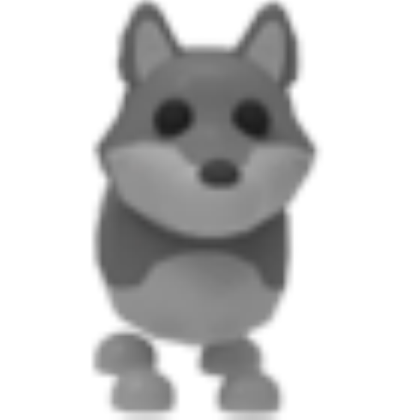
Wolves will also catch and eat rabbits, mice, birds, snakes, fish, and other animals. Since many of these animals are larger than wolves, the only way wolves can catch them is to live and hunt in groups. Their favorite prey is large ungulates (hoofed mammals) such as deer, elk, moose, caribou, and bison. Their claws are like our fingernails and grow throughout their lives. Wolves have four toes on each paw, with two “dewclaws” - small, vestigial toes - on each forefoot. They can reach speeds of up to 45 miles per hour for short distances. The bones (the radius and ulna) in their forearms are fused so their front legs are strong for running. They are adapted for running fast to catch moving prey like deer and elk. Wolves have long, slender legs and narrow chests. Wolves’ jaw muscles are twice as powerful as those of German shepherd dogs and can produce a pressure of 1500 pounds per square inch. They are blue at birth, changing color at around eight weeks of age. Wolves’ eyes range in color from gold to orange, and may even be green. Also, wolves that live in the cold north are generally larger and heavier than wolves that live in warmer climates. This may be smaller than some breeds of dog! Wolves lose some insulating fat and shed much of their fur in the summer, and weigh less than. Snow does not melt when it falls on wolves’ fur! In the spring, the inner layer of wool is shed to help keep the wolf cool during the summer.Īn adult male wolf usually weighs 75 to 120 pounds females weigh between 60 and 95 pounds. These layers are so warm that wolves can comfortably tolerate temperatures far below zero. The inner layer is thick, soft gray “wool”, which traps air and insulates the wolf from the elements. Wolves have two layers of fur: the outer, guard layer is composed of long, coarse hairs that shed water and snow and contain pigments that give the wolf’s coat its color. This banded coloration is known as agouti and is found in a number of wild species. The gray wolf can actually range in color from pure white to solid black, but the most common shade is a tawny brown in which the wolf’s guard hairs are banded with black, white, gold, and brown.


Click here to Learn more about seminars/workshopsSeminars/Workshops.Click here to Learn more about private programsPrivate Programs.Click here to Learn more about eventsEvents.Click here to Learn more about toursTours.Click here to Learn more about programsPrograms.Click here to Learn more about in memoryIn Memory.Click here to Learn more about species informationSpecies Information.Click here to Learn more about ambassadorsAmbassadors.Click here to Learn more about contactContact.Click here to Learn more about press roomPress Room.Click here to Learn more about researchResearch.Click here to Learn more about staffStaff.Click here to Learn more about historyHistory.Click here to Learn more about missionMission.Click here to Learn more about aboutAbout.


 0 kommentar(er)
0 kommentar(er)
